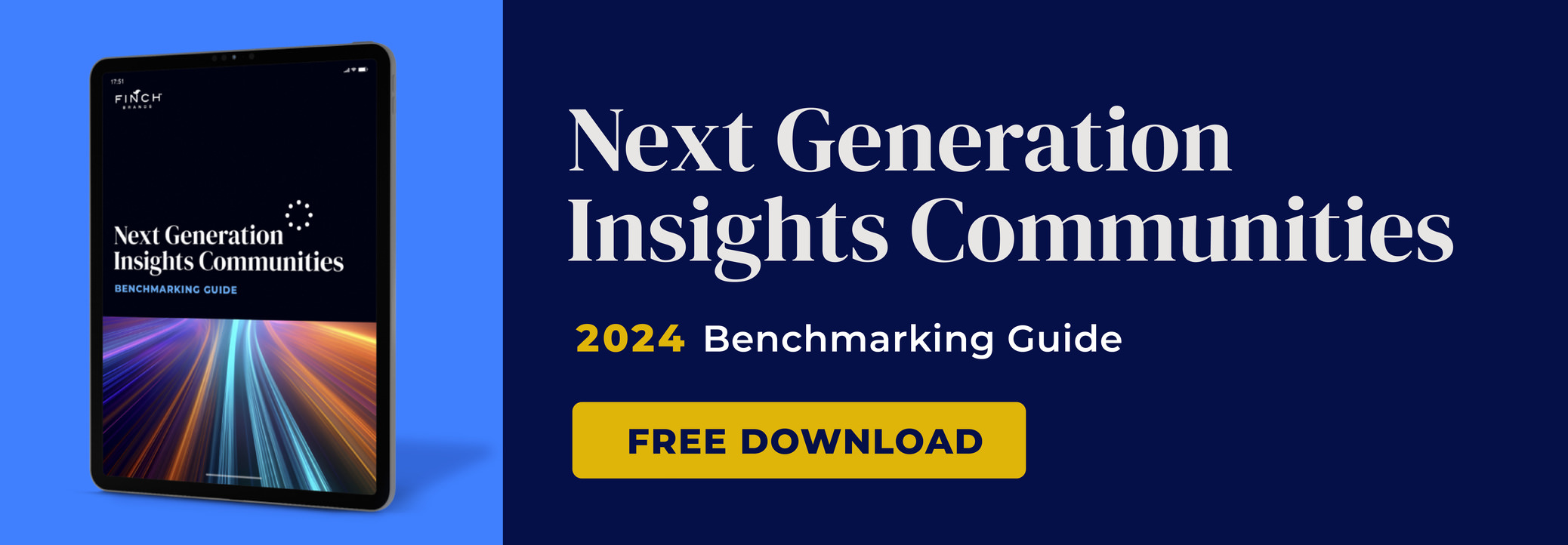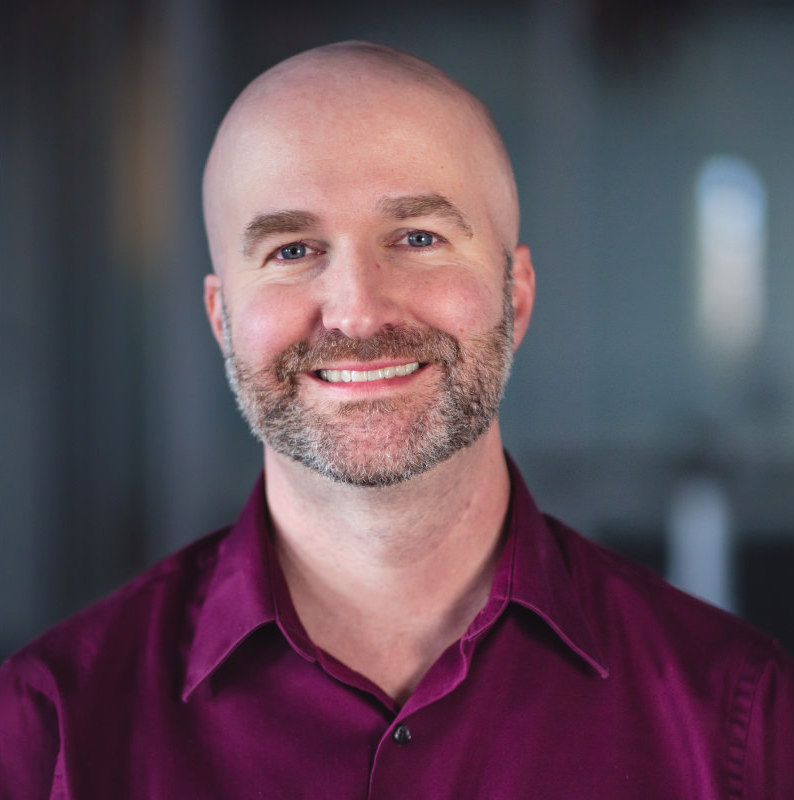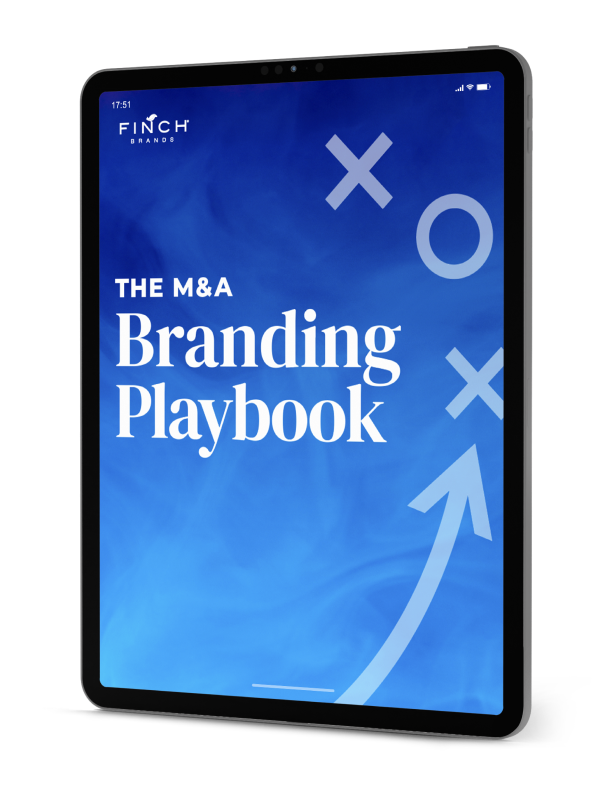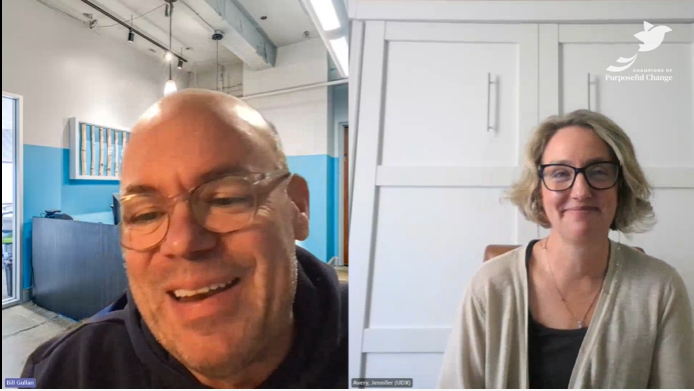One Big Idea: Research Communities and the Customer-Centricity Imperative
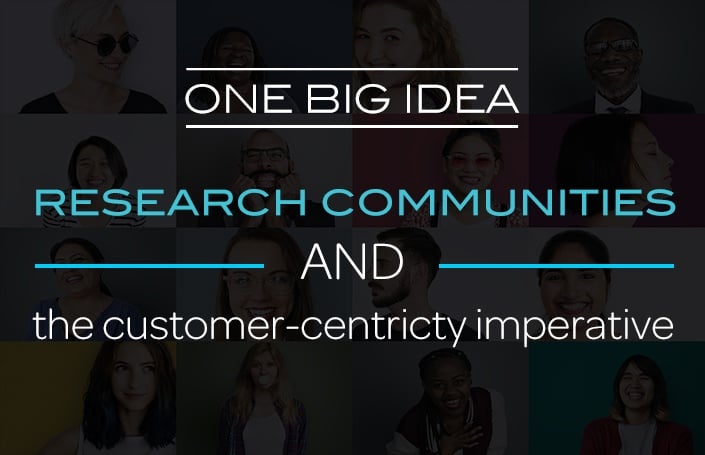
Research communities are the future of market research and serve as a vehicle for injecting the voice of the customer into decision making processes that inform sales, marketing, operations, product development, and beyond. In this episode, we host Tom Finkle, Chief Innovation Officer of Finch Brands. He provides his perspective on market research today, the power of research communities, and the need to put the customer at the center of your business. If you like our podcast, please subscribe and leave us a rating!
Podcast: Play in new window | Download Subscribe: iTunes | RSSTranscription:
Bill Gullan: Greetings one and all. This is Real-World Branding. I’m Bill Gullan, President of Finch Brands, a premier boutique branding agency. Very excited to be back on the show here. We’ve been up and down this summer in terms of our output and our intent is to scale up again this fall, starting with what we’re going to be doing here today, and I’m particularly excited by the fact that we have Tom Finkle, the Chief Innovation Officer at Finch Brands, with us today. Tom, thanks for joining us.
Tom Finkle: Thanks, Bill.
Bill: So, what we’re going to do today and in a subsequent episode, one of the reasons why we’ve been a little bit more heads down over here at Finch Brands, through spring and summer, is because of how focused we’ve been on a particular offering within the market research realm, and in our market research practice. That’s insights communities, and Tom is an instrumental player in that endeavor for us, and so we wanted to bring him on to talk a little bit about today – what a community is and why it’s become an idea with a heck of a lot of relevancy and velocity in the market research world, and what we’re doing here at Finch to help our clients pursue an ever more efficient and powerful research program.
Before we do, a little bit of backstory just about how this came about here at Finch. We’ve been around about 20 years and the insights part of our business, the market research part of our business has always been fundamental to how we service our clients and help them activate their full potential at really important moments. We found that over time, clients have come back to us again and again with ad hoc market research needs.
We gladly and excitedly would help them fulfill that and understand how the marketplace is viewing them, and help them see the world through the consumer’s eyes. However, we saw an opportunity to increase the efficiency of what our clients have been doing in the market research realm, and to turn market research into a program instead of just being a string of somewhat disconnected projects. So, as we began to consider how best to do this, we were very fortunate to run into Tom Finkle.
Tom will take you through his background in a moment, but suffice it to say he’s been a pioneer in the world of communities, leading one of the early mover firms called Passenger, etc., and he’s a PhD, really high powered, world class researcher and has been across his career. We had a chance to meet Tom late in 2016 and we actually wound up engaging him as a consultant to help us understand the opportunity that Finch Brands might have to offer research communities, to clients in a way that fit our model and fit our client base’s needs, and worked with our structure and approach.
Through that work, we really got to know Tom. He got to know Finch Brands and the happy accident was that at the first of the year, we brought him on full time to help build this offering for us and vet our technology partners. This is the longest drum roll in the history of drum rolls, but we’re really excited to have Tom with us, and today I think we’d like to talk a little bit about his background in research communities, why research communities are effective for clients, and what are the situations when one ought to consider one.
Then, we’re going to follow-up next week with Tom as well as with John Ferreira, the Senior Vice President and General Manager here at Finch Brands who’s been on this podcast before. John had the chance during his tenure in brand management at Campbell Soup to be a consumer of insights communities, so the next two podcasts are really going to be focused on what’s an exciting thing for us and for our clients as well, and that’s research communities, what we’re calling FinchSight research communities. So, with that as the backdrop, Tom, again, really glad to have you. Would you like, or be able to give us a bit of a twirl through your own professional journey as a way to start?
Tom: Absolutely. Thanks Bill. So, as Bill mentioned I have a PhD in experimental psychology from the University of Southern California. Moved into market research where I spent the bulk of my career at large agencies like GfK and TNS, responsible for domestic and global business. Then, as Bill mentioned, I moved on to Passenger, and was the CEO there for three years. Passenger is an online company that focuses on the community space, and so I come to the table with a great deal of both research experience and community experience.
Bill: Terrific. Obviously a great asset for us, and our clients. When we met and you were assessing this opportunity from Finch Brands’ perspective, looking at your experience in the community world and what’s out there, what were you thinking about? What are the things that you looked for in terms of our organization as well as what the marketplace is doing that would indicate the opportunity and fit of something like this from Finch’s perspective?
Tom: So, I think there are a number of factors that I looked at and investigated, and based upon that analysis, came to the conclusion that Finch really was well positioned to offer a successful communities solution. Really at the top of the list from my perspective is Finch Brand’s ability to add insight to the learning that comes out of communities. In the community space, increasingly there’s a division in terms of the providers. There’s a large number of technology based companies that just provide the platform, and then there are other full service shops that provide the platform, but on top of that add insights.
A huge pain point in the market research industry, really for a long time, has been the ability of market research and branding consultancies to provide that kind of guidance to clients that moves our business forward. Finch Brands really has that capability, so layered on top of our community expertise is this excellent branding, customer innovation, and customer experience capability that we regularly draw upon as we guide clients through their business problems in these areas – using communities as the delivery mechanism.
Bill: Terrific. What is a research community? Why is it an idea whose time has come?
Tom: At its most simplest, communities bring people together who share something in common. It can be using a brand or sharing an attitude. Then, what happens is we use these individuals as a captive resource.
Bill: We enslave them and we capture them?
Tom: We do.
Bill: Where do they live in this model?
Tom: They live in the online world, the ethosphere. We use them to drive either brand advocacy or we use them to answer questions that our clients have about their products and services. Those questions are those that one typically faces across the product life cycle. So, starting at the beginning as I mentioned earlier, we help clients with their innovation challenges, their brand health issues, and communications, all the way through to the customer experience.
Bill: Okay. What is the difference just in a pure cheat sheet kind of way between a community of the sort that we’re discussing and normal focus groups and surveys that you may do from time to time based upon needs that you may have at a given juncture in a year?
Tom: I think the key thing is the ability to have a conversation with consumers. I think we’ve all been at the receiving end of a survey over the telephone which really is a one directional kind of interview. The farthest thing from a conversation, I think, that anyone can imagine.
Communities provide an opportunity for conversations to take place between brand teams or clients and community members, either their customers or non-customers. But I think also importantly, they provide the opportunity for conversations to happen between community members.
So, the information you get from communities is therefore really rich, and that’s especially true when conducting innovation work and new product development or studying brand issues, or as I mentioned before, customer experience.
Bill: So, it sounds like communities are recruited once or replenished over time, but really the bulk of the recruiting work is done once and then you can I suppose research in an on-demand way as much or as frequently as you need to. When it comes to methodologies, you mentioned surveys, that we typically associate with market research, qualitative stuff like focus groups or ethnographies or quantitative things like surveys. Are communities flexible enough to deal with these many different types of things?
Tom: Yeah, absolutely. Communities offer a comprehensive suite of qualitative and quantitative research methodologies. So, those capabilities are on-demand and the results are available almost instantaneously. It’s a great benefit of communities, both the comprehensiveness of these methodologies and the ability to deploy them at the drop of a hat. That, by the way, is particularly useful in the area of corporate reputation, where a brand’s image and reputation as we all know, can literally be destroyed in hours on social media.
Bill: Right. Some of the questions of course, in a client services world, that we get asked is about time and cost or investment. What is the impact compared to other methods, in terms of timing and in terms of investment? Communities versus other traditional forms of research.
Tom: Sure. So, in terms of speed, I mentioned that the results are available almost instantaneously, and that’s true of qualitative and quantitative research. The data are there, and you can monitor them as they’re being collected. From a cost perspective, we typically run four to six market research projects a month in our communities and when we’ve done the analysis, the pricing comparison, our community model delivers that work at roughly a 40% discount over traditional methodologies like surveys and qualitative work.
Bill: Okay. That sounds great. One of the things I know that you focused on early in your tenure here, right out of the gate, was the selection of technology platforms. Could you speak about the importance of the platform and some of the things that you look for and how it all works and what it enables you to do? Just the technology side of communities. You mentioned it’s online, we know that it’s digital, that’s one of the reasons why communities can exist in a way that they maybe haven’t been able to historically. Speak about the technology platform if you would, and the role that it has in executing one of these.
Tom: Right, so the technology platform is really the beginning of the process. It’s integral to the success of any community. So, what we look for in our technology platform is first of all, the ability to do all variety of market research methodologies. I mentioned before qualitative and quantitative work. Another key benefit is the ability for respondents or members to talk to each other and build on each other’s ideas. Particularly relevant in the innovation space.
Collaboration, engagement, functionality is critical. Our technology platform also has the ability to provide access on a mobile basis. All of our capabilities are mobile accessible. So respondents can dial into the community from wherever they are which is particularly relevant in the shopper space.
Bill: Yeah, so you’re talking about retail. Rather than asking someone on a survey after the fact, or whatever, or before the fact, “What do you plan to do?” Or, “What did you just do?” It sounds like having this technology enables you to access them really in the moment, right?
Tom: Exactly, exactly. You get around the problem of forgetting which is a key problem in more traditional market research projects, which ask about events that have happened long ago.
Bill: Yeah. That’s terrific. You mentioned this notion of corporate reputation. Are there larger trends afoot that may be creating a special moment where communities are particularly relevant here? We know you hear phrases like customer centricity, you hear a lot of discussion about the empowering element of social media and consumers expecting a different kind of dialog. Could you speak to the moment that we’re in, and why communities in your opinion are particularly well suited for this?
Tom: Absolutely, yeah. I mean, I think it’s safe to say that over the last decade or so, consumers have increasingly used social media to express their opinions really about all aspects of their commercial lives, and as we know, their personal lives. In some sense, their brand selection is an extension of their personal life. That’s how important social media has become to consumers. So, communication about brands has really become an integral part of brand management for companies out there that are either in the B2C space or B2B space.
So, what communities really provide is that 24/7 resource that allows for customer to customer engagement, and brand to customer interaction. By doing all of this and having this resource available on-demand, the insights generated from communities can lead to brand success.
Bill: Terrific. The condition that you were talking about regarding consumers expecting a different kind of relationship with brands prior to communities, how well would you say that market research service providers were reacting to that? You mentioned or at least implied earlier that communities were a new, different way.
Tom: Yeah. Well, I think there’s been a progression in market research in terms of methodologies. A long time ago everything was done by mail, so think about how long the time was between a survey design and the response back. Then, they went to phone. Then, online interviewing. The next real stage is the community experience, because it is on-demand and provides all the benefits we’ve described.
Bill: Terrific. It also seems like prior to communities, you mentioned the speed and the cost benefits here, if you had a need that either it was something that you knew and was important, and you were planning to study it, or it was something that just came up in a meeting that morning, that traditional research response involved a heck of a lot of time and dollars to strike up a band every time. You didn’t have this captive resource and the knowledge base wasn’t building on itself.
These projects were individual snapshots in time, that cost a lot, and I would imagine, at least for many of our clients, that there were situations where they would really go without insights in cases where insights really would have been helpful, but they went without either because they didn’t have time or it wasn’t budgeted, or things like that. Seems like communities are part of an antidote to that concern.
Tom: They are. I mean, if a company embeds a community into their insights function, it really becomes part of the marketing planning process. So, injecting the customer, the consumer into that process via community vehicle improves insights about what your customer needs are, and ultimately as I said before, leads to brand success.
At the end of the day, it’s a vehicle that can meet all of the stakeholder needs that exist in an environment where products are being marketed. So, sales, marketing, operations, product development. I mean, corporate reputation management, the list goes on and on. Having that vehicle at the ready is a great resource.
Bill: Great. Well, let’s leave it there for this week. Tom Finkle, thank you for joining us. I know there’s a lot more content that we’ve developed that’s available at FinchBrands.com. There’s a white paper there that makes the case for insights communities at this particular moment in our commercial life and highlights and goes deeper I think into some of the conditions that you’re discussing, as well as lays out a little bit about what communities are and how they work.
Really appreciate your time. We’ll be back next week to go into more detail a little bit about how communities in a real functional way can support important programs and processes within a brand management structure. Anything you want to close with before we adjourn?
Tom: Just by way of summary, I think communities really are the future in both insights and brand advocacy management, and extremely happy to say that we here at Finch have a terrific offer.
Bill: Excellent, and we’re happy that we do, and we’re happy that you’re leading it, so Tom Finkle, Chief Innovation Officer at Finch Brands, thank you for your time, my friend.
Tom: Thank you.
